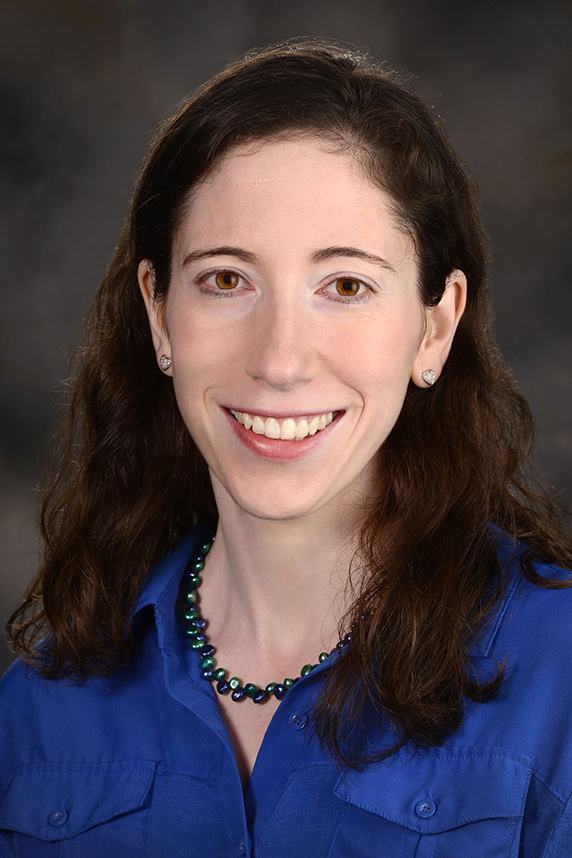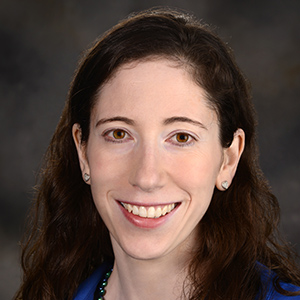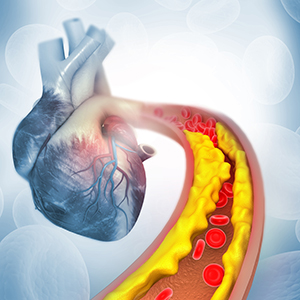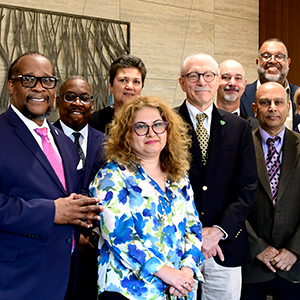Starting a period is a rite of passage for many girls, an event that signals the shift to womanhood. Yet despite its undeniable importance, surprisingly little is known about the biological underpinnings of a girl’s first few menstrual cycles.
To learn more, NIEHS is launching the largest, most comprehensive study to date of this critical transition. “A Girl’s First Period ― Why Is It So Unpredictable?” will chart the normal developmental path of the beginning of menstruation.
“Currently, we have no way of detecting what is normal and abnormal,” said Natalie Shaw, M.D., an NIEHS clinical researcher who is leading the study. “Girls are often told that it is normal for periods to be irregular in the first year, but that is probably the wrong message. Ultimately, we want to develop a way to differentiate between the girls who will go on to establish regular cycles from those who may be at high risk for infertility and other issues.”
 Moms can help their daughters prepare for puberty by enrolling them in the new “A Girl’s First Period” study.
Moms can help their daughters prepare for puberty by enrolling them in the new “A Girl’s First Period” study.Safeguarding reproductive health
Irregular menstruation was reported to affect more than 2.5 million women of reproductive age in the United States each year. Most adult women with irregular periods reported that their symptoms dated back to early adolescence. Researchers think that prevention strategies targeted during adolescence might safeguard reproductive health in adulthood.
As a pediatric endocrinologist with training in reproductive endocrinology, Shaw became frustrated that she was unable to tell her adolescent patients what to expect in the months and years ahead. She said there are only a few, small, and relatively old studies to reference, and most of them have little relevance to today’s adolescent girl. For example, the current understanding of a girl’s first period rests largely on a 2008 study of hormone levels in ten girls.
“Everything you can imagine that might affect menstrual cycles and pubertal timing is different now — race, body weight, sleep habits, environmental exposures, activity levels, nutrition,” said Shaw. “I thought we could do better.”
Demystifying periods
 As head of the NIEHS Pediatric Neuroendocrinology Group, Shaw is particularly interested in puberty and how it is affected by genetics and the environment. (Photo courtesy of Steve McCaw)
As head of the NIEHS Pediatric Neuroendocrinology Group, Shaw is particularly interested in puberty and how it is affected by genetics and the environment. (Photo courtesy of Steve McCaw)The American Academy of Pediatrics designated a girl’s menstrual cycle length as a vital sign of overall health and recommends that doctors pursue a diagnostic workup in girls whose cycles deviate from a normal range of 20-45 days. But Shaw said that recommendation is problematic, because the range was statistically defined and does not represent the fluctuations of hormones girls might experience over the course of a cycle.
“Adolescent cycle length does not correlate with a specific hormonal pattern and is a poor marker of ovulation, the process of releasing eggs from the ovaries,” she said. “No one has been able to look closely at this before, both because adolescents are difficult study subjects and because we lacked a funding mechanism to make it happen.”
What makes girls tick
With launch of the new study, Shaw hopes to paint a more comprehensive picture of menstruation and ovulation in adolescent girls. The study will enroll 75 girls between the ages of 10 and 14 years, with the goal of having at least 25 girls complete all study visits.
Over the course of two years, researchers will monitor blood and urine samples of study participants to measure reproductive hormone levels. Using ultrasounds of the abdomen, they will assess development of the ovaries and uterus. The regular blood draws and ultrasounds will be performed by a trained medical professional either at the NIEHS Clinical Research Unit (CRU) or at the participants’ home in the presence of at least one parent or guardian.
Throughout the study, Shaw and her team plan to keep participants engaged with frequent outreach and educational materials, such as newsletters and invitations to hear scientists present their latest research findings.
“I know it sounds corny, but I want the girls to feel special, and to recognize the important role they are playing in this research,” she said. “It wouldn’t be possible without them.”
Citations:
Kjerulff KH, Erickson BA, Langenberg PW. 1996. Chronic gynecological conditions reported by US women: findings from the National Health Interview Survey, 1984 to 1992. Am J Public Health 86(2):195–199.
Zhang K, Pollack S, Ghods A, Dicken C, Isaac B, Adel G, Zeitlian G, Santoro N. 2008. Onset of ovulation after menarche in girls: a longitudinal study. J Clin Endocrinol Metab 93(4):1186–1194.
Carlson LJ, Shaw ND. 2019. Development of ovulatory menstrual cycles in adolescent girls. J Pediatr Adolesc Gynecol 32(3):249–253.
(Marla Broadfoot, Ph.D., is a contract writer for the NIEHS Office of Communications and Public Liaison.)









